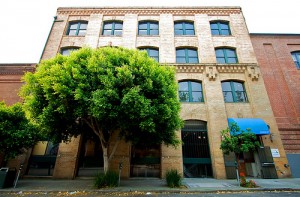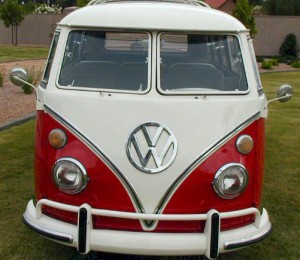The San Francisco office of Botsford-Ketchum was located at 55 Union Street in 1976.
You will still find a lot of unconventional people working in the advertising business, especially on the creative side. There was one art director I met at Botsford-Ketchum who happened to lean just a little further off the wall, but in a good way.
He had a long ponytail, wore loose fitting pullover tops, string-tie pants, and sandals most of the time. Your immediate thought would be here’s someone caught in a time warp, a leftover hippie from the Haight-Ashbury Summer of Love although he was from the East Coast. More often than not, I’d find him meditating in a crossed-legged yoga position on top of the built-in desk in his cubicle — sticks of burning incense surrounding him.
He lived in his Volkswagen bus.
He proudly showed it to me one day. The rear and side windows were covered by the standard issue khaki-colored curtains with their red and black plaid design. A narrow bed in back of the driver’s seat ran the length of the van. The floor was covered in a plush pile rug. There was a small dresser in the rear and a place to hang clothes. It was neat as a pin, even to a pair of slippers carefully placed next to the bed.
His daily routine consisted of leaving the office after work, driving to and parking wherever he felt like sleeping that evening — usually somewhere by the bay or the ocean. Early the next morning he’d return, shower at the agency, and then breakfast at a cafe down the street.
Although we never worked together, I would occasionally get a glimpse of an ad or brochure or design project he had in the works. He was a tasteful art director and his work reflected it.
We would go to lunch occasionally. Once we got into a conversation about how we each got our starts in the business. He told me he put together a portfolio of stolen ads to get his first job in New York.
I began to laugh until I realized he was serious. He explained that he knew he was capable of doing excellent work, but didn’t want to start as a junior and work his way up. So, he clipped out ads from magazines and put together a portfolio of what he considered great print advertising. Because these were not consumer ads from major accounts, but rather industrial and trade ads from small or little known agencies and companies, no one bothered to verify or question whether he did them.
It worked. He landed his first job at Doyle, Dane, Bernbach in New York as a full-fledged art director. Because he was capable of creating ads comparable to those he used to get his foot in the door, he quickly built a real portfolio of his own Doyle Dane work. He continued to move on and up from one agency to another.
By the time I met him, he had become disenchanted with the business — the internal politics, the constant fight to produce good creative and so on. He wanted out and was just biding his time awaiting an inheritance that would allow him to quit.
I lost track of him after I left Ketchum. About 10 years later, I ran into him at a restaurant in Mill Valley. He finally got out of the business, lived in Hawaii, spent his days playing golf.
As we said our goodbyes, he handed me his card and said if I needed any art direction help to keep him in mind. I didn’t look at the card until the following day. His name was printed above the words “Advertising Art Direction.” There was nothing else on the card — no address, no telephone number.



